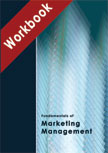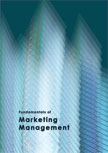Philips: Making Sense of Simplicity
|
|
ICMR HOME | Case Studies Collection
Case Details:
Case Code : MKTG163
Case Length : 19 Pages
Period : 2004-2007
Pub Date : 2007
Teaching Note :Not Available
Organization : Royal Philips Electronics, Inc.
Industry : Electricals and Electronics
Countries : Worldwide
To download Philips: Making Sense of Simplicity case study
(Case Code: MKTG163) click on the button below, and select the case from the list of available cases:

Price:
For delivery in electronic format: Rs. 400;
For delivery through courier (within India): Rs. 400 + Shipping & Handling Charges extra
» Marketing Case Studies
» Marketing Management Short Case Studies
» Case Studies Collection
» ICMR HOME
» Marketing Management Short Case Studies
» View Detailed Pricing Info
» How To Order This Case
» Business Case Studies
» Area Specific Case Studies
» Industry Wise Case Studies
» Company Wise Case Studies
Please note:
This case study was compiled from published sources, and is intended to be used as a basis for class discussion. It is not intended to illustrate either effective or ineffective handling of a management situation. Nor is it a primary information source.
Chat with us

Please leave your feedback

|
|




<< Previous
Introduction Contd...
|
The 'Sense and Simplicity' brand positioning was based on Philips' traditional
strengths of design and technology. As per the new brand promise, the company
was to launch high-tech products that met customers' needs but had simple
designs and easy-to-use interfaces. Philips set up a Simplicity Advisory Board
consisting of experts from diverse fields to bring in fresh perspectives to its
quest for simplicity. The emphasis on simplicity was applied not only to new
products and concepts, but was also used to make Philips a nimbler and a more
effective company. Though Philips was still behind in the numbers game,
especially in consumer electronics (Philips was the leader in lighting and
medical equipment products in several markets), it was generally agreed that the
company was moving in the right direction.
|

|
However, there were also skeptics who felt that the company's new strategy
would do little to strengthen Philips' competitiveness.
Background Note
Philips was established in Eindhoven, a small town in The Netherlands, in
1891 as a manufacturer of carbon-filament lamps and electrical products. By
the end of the nineteenth century, it had become the largest producer of
these lamps. In 1914, it set up a research center for the development of new
products. In 1918, it began manufacturing medical x-ray tubes.
|
|
Even before the start of the First World War, Philips
had established marketing companies in the US and France. In the 1920s,
the company expanded to new territories.
In the mid-1920s, Philips' research labs were involved in the
development of radio and television technology. In 1927, the company
introduced its first radio. Within a span of five years, it was able to
sell a million radios. In 1930, the company started using the star and
waves logo6 on radios and
gramophones. In 1933, it started manufacturing x-ray equipment in the
US. In 1939, it launched electric shavers. By this time, Philips
employed as many as 45,000 people worldwide... |
Excerpts
>>
|
|









